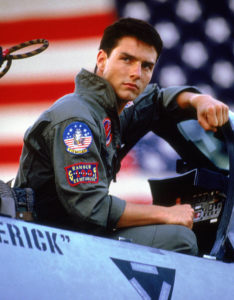Aerial combat was born during World War I, giving the world a new kind of military hero: the fighter pilot
 “Top Gun” is back. The 1986 film about Navy fighter pilots is getting a sequel next year, with Tom Cruise reprising his role as Lt. Pete “Maverick” Mitchell, the sexy flyboy who can’t stay out of trouble. Judging by the trailer released by Paramount in July, the new movie, “Top Gun: Maverick,” will go straight to the heart of current debates about the future of aerial combat. An unseen voice tells Mr. Cruise, “Your kind is headed for extinction.”
“Top Gun” is back. The 1986 film about Navy fighter pilots is getting a sequel next year, with Tom Cruise reprising his role as Lt. Pete “Maverick” Mitchell, the sexy flyboy who can’t stay out of trouble. Judging by the trailer released by Paramount in July, the new movie, “Top Gun: Maverick,” will go straight to the heart of current debates about the future of aerial combat. An unseen voice tells Mr. Cruise, “Your kind is headed for extinction.”
The mystique of the fighter pilot began during World War I, when fighter planes first entered military service. The first aerial combat took place on Oct. 5, 1914, when French and German biplanes engaged in an epic contest in the sky, watched by soldiers on both sides of the trenches. At this early stage, neither plane was armed, but the German pilot had a rifle and the French pilot a machine gun; the latter won the day.
A furious arms race ensued. The Germans turned to the Dutch engineer Anthony Fokker, who devised a way to synchronize a plane’s propeller with its machine gun, creating a flying weapon of deadly accuracy. The Allies soon caught up, ushering in the era of the dogfight.
From the beginning, the fighter pilot seemed to belong to a special category of warrior—the dueling knight rather than the ordinary foot soldier. Flying aces of all nationalities gave each other a comradely respect. In 1916, the British marked the downing of the German fighter pilot Oswald Boelcke by dropping a wreath in his honor on his home airfield in Germany.
But not until World War II could air combat decide the outcome of an entire campaign. During the Battle of Britain in the summer of 1940, the German air force, the Luftwaffe, dispatched up to 1,000 aircraft in a single attack. The Royal Air Force’s successful defense of the skies led to British Prime Minister Winston Churchill’s famous declaration, “Never in the field of human conflict was so much owed by so many to so few.”
The U.S. air campaigns over Germany taught American military planners a different lesson. Rather than focusing on pilot skills, they concentrated on building planes with superior firepower. In the decades after World War II, the invention of air-to-air missiles was supposed to herald the end of the dogfight. But during the Vietnam War, steep American aircraft losses caused by the acrobatic, Soviet-built MiG fighter showed that one-on-one combat still mattered. The U.S. response to this threat was the highly maneuverable twin-engine F-15 and the formation of a new pilot training academy, the Navy Fighter Weapons School, which inspired the original “Top Gun.”
Since that film’s release, however, aerial combat between fighter planes has largely happened on screen, not in the real world. The last dogfight involving a U.S. aircraft took place in 1999, during the NATO air campaign in Kosovo. The F-14 Tomcats flown by Mr. Cruise’s character have been retired, and his aircraft carrier, the USS Enterprise, has been decommissioned.
Today, conventional wisdom again holds that aerial combat is obsolete. The new F-35 Joint Strike Fighter is meant to replace close-up dogfights with long-range weapons. But not everyone seems to have read the memo about the future of air warfare. Increasingly, U.S. and NATO pilots are having to scramble their planes to head off Russian incursions. The knights of the skies can’t retire just yet.





